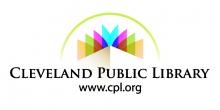CORY UNITED METHODIST CHURCH, one of the oldest AFRICAN AMERICAN churches in Cleveland, grew from 15 members at its founding on 25 March 1875 to an important institutional church by the 1960s. Rev. Henry Steen (or Stein) of Cadiz, OH, founded the church at a meeting in the home of James Hankins at 38 Hackman (E. 36th) Street. First known as Cory Chapel, the church was named in honor of Rev. John Bruce Cory, a white Methodist missionary in the city. Services were held in several locations before the church moved into a rented building at Forest and Garden (E. 37th and Central) streets. The building was dedicated on 6 Nov. 1887 and in October 1890 the congregation bought the property. Cory United Methodist had 109 members by 1892. In September 1911, the congregation, under the leadership of Rev. George Sissle, acquired a building at E. 35th and Scovill Ave. A fire in February 1921 necessitated holding services elsewhere until repairs were completed. By 1926, the refurbished church had become too small for the growing congregation and a campaign was launched to raise funds for a larger church. The Depression, however, postponed the purchase of larger quarters. In September 1946, under Rev. Dr. Oliver B. Quick, the church paid $125,000 for the ANSHE EMETH building at 1117 E. 105th Street in the GLENVILLE neighborhood. After spending another $35,000 on improvements and repairs, Cory United Methodist Church moved into its new quarters on 2 March 1947. During the pastorate of Rev. Quick at Cory, church membership increased from a few hundred in the late 1930s to more than 3,000 in 1952.
The congregation at Cory United Methodist has been interested in more than religious issues since its earliest years, as evidenced in the lively debates sponsored by the Ladies Church Aid and Literary Society in the 1880s. Following the purchase and renovation of its expansive facilities in Glenville, the church became an important community and recreation center as well as a religious institution. By early 1949, it operated a library, gymnasium, swimming pool, and music school, and it had three choirs and a concert hall. In 1961, the city Division of Recreation leased the church's recreational facilities for the Cory Recreation Center, which offered craft, dance, and music classes, and meeting and game rooms in addition to the pool and gymnasium. The church also sponsored boys' football teams to "eliminate the temptation to get into trouble." As a leading public forum in Cleveland, Cory hosted both Malcolm X and Martin Luther King, Jr. in the 1960s. Malcolm X delivered his famous "The Ballot or the Bullet" speech at Cory in 1964 and Martin Luther King, Jr. gave his last speech in Cleveland at the church. Since the 1970s, the church has served as a site for a Hunger Task Force Food Center; the Cory Kitchen, an interchurch council program, served meals to the needy. Other community outreach activities included a daycare center, a senior program, a headstart program, a job fair, and computer classes. In 1996, Cory launched the Council of Fathers, a non-profit organization dedicated to teaching men how to be better fathers, in collaboration with the CENTER FOR FAMILIES AND CHILDREN and the GLENVILLE YMCA. The council offered a six-week training course for men focusing on achieving financial security and assuming greater parenting responsibilities. Cory hosted a holiday gospel fest to collect canned goods for Werner United Methodist Hunger Center and cell phones for Hitchcock Women's Center, and a celebration of heritage and hope, "Empower a Dream for Our Children," featuring music, dance, poetry, and history. With over $2.5 million in assets, the Cory Methodist Church Credit Union has operated since 1958, providing the community with financial services ranging from saving plans to certificates of deposit. From 1987 until 1997 and in 1999, Cory hosted the annual Martin Luther King, Jr. concert featuring the CLEVELAND ORCHESTRA. As of 2009, Reverend James B. Roberson served as the pastor of Cory United Methodist and the church had an average attendance of 200 at its services.
View image in Digital Cleveland Starts Here®
View image at Cleveland Public Library
View photo gallery at Cleveland Public Library



